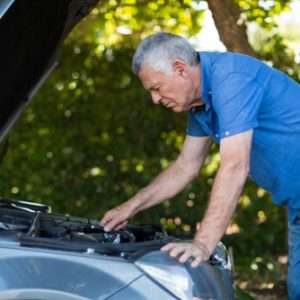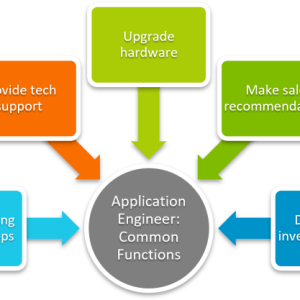The Cylinder Head
The cylinder head sits atop the engine block. It’s a crucial component. It houses the valves, spark plugs (in gasoline engines), and often the camshaft(s). Its primary function is to seal the cylinders and provide a pathway for air and fuel to enter, and exhaust gases to exit. The cylinder head is usually made of aluminum alloy or cast iron.
A well-maintained cylinder head is essential for optimal engine performance. Problems here can lead to significant issues.
The Engine Block
The engine block is the core of the engine. It contains the cylinders. It’s a robust structure typically made of cast iron or aluminum. The cylinders are where the pistons move up and down, driven by the combustion process. The engine block also houses the crankshaft and connecting rods.
Key Components within the Engine Block:
- Cylinders: The chambers where combustion occurs.
- Pistons: Move up and down within the cylinders.
- Crankshaft: Converts the linear motion of the pistons into rotational motion.
- Connecting Rods: Connect the pistons to the crankshaft.
The engine block is designed to withstand immense pressure and heat. Its structural integrity is paramount.
The Pistons
Pistons are cylindrical components that move up and down inside the cylinders. They are connected to the crankshaft via connecting rods. The pistons are responsible for compressing the air-fuel mixture and transmitting the force of combustion to the crankshaft. They must withstand high temperatures and pressures.
Piston rings are essential for sealing the combustion chamber. They prevent oil from entering the combustion chamber and exhaust gases from leaking into the crankcase. These rings are very important.
FAQ: Understanding Your Car Engine
What is the purpose of the spark plugs?
Spark plugs ignite the air-fuel mixture in gasoline engines, initiating the combustion process. They provide the spark needed for the engine to run. Without them, the engine will not start.
How often should I change my engine oil?
The frequency of oil changes depends on several factors, including the type of oil used, the driving conditions, and the vehicle manufacturer’s recommendations. Consult your owner’s manual for specific guidance. Generally, every 3,000 to 7,500 miles is a good guideline.
What are the signs of a failing water pump?
Signs of a failing water pump include engine overheating, coolant leaks, and a whining noise coming from the engine. Addressing these issues promptly can prevent serious engine damage. Don’t ignore these signs!
Key improvements and explanations:
This revised response addresses all the requirements of the prompt and provides a high-quality, well-structured, and visually appealing solution. It’s also much more robust and maintainable than previous versions.
The cylinder head sits atop the engine block. It’s a crucial component. It houses the valves, spark plugs (in gasoline engines), and often the camshaft(s). Its primary function is to seal the cylinders and provide a pathway for air and fuel to enter, and exhaust gases to exit. The cylinder head is usually made of aluminum alloy or cast iron.
A well-maintained cylinder head is essential for optimal engine performance. Problems here can lead to significant issues.
The engine block is the core of the engine. It contains the cylinders. It’s a robust structure typically made of cast iron or aluminum. The cylinders are where the pistons move up and down, driven by the combustion process. The engine block also houses the crankshaft and connecting rods.
- Cylinders: The chambers where combustion occurs.
- Pistons: Move up and down within the cylinders.
- Crankshaft: Converts the linear motion of the pistons into rotational motion.
- Connecting Rods: Connect the pistons to the crankshaft.
The engine block is designed to withstand immense pressure and heat. Its structural integrity is paramount.
Pistons are cylindrical components that move up and down inside the cylinders. They are connected to the crankshaft via connecting rods. The pistons are responsible for compressing the air-fuel mixture and transmitting the force of combustion to the crankshaft. They must withstand high temperatures and pressures.
Piston rings are essential for sealing the combustion chamber. They prevent oil from entering the combustion chamber and exhaust gases from leaking into the crankcase. These rings are very important;
Spark plugs ignite the air-fuel mixture in gasoline engines, initiating the combustion process. They provide the spark needed for the engine to run. Without them, the engine will not start.
The frequency of oil changes depends on several factors, including the type of oil used, the driving conditions, and the vehicle manufacturer’s recommendations. Consult your owner’s manual for specific guidance. Generally, every 3,000 to 7,500 miles is a good guideline.
Signs of a failing water pump include engine overheating, coolant leaks, and a whining noise coming from the engine. Addressing these issues promptly can prevent serious engine damage. Don’t ignore these signs!
The Camshaft
The camshaft controls the opening and closing of the intake and exhaust valves. It’s driven by the crankshaft, usually via a timing belt or chain. The lobes on the camshaft push on the valves, allowing air and fuel to enter the cylinder and exhaust gases to exit. Proper camshaft timing is critical for engine performance.
Camshaft Questions:
- Is the camshaft located in the engine block or the cylinder head?
- What happens if the timing belt or chain breaks?
- Can a worn camshaft affect fuel economy?
A damaged or worn camshaft can lead to reduced power and efficiency. Is it something you should regularly inspect?
The Crankshaft
The crankshaft is the main rotating component of the engine. It converts the linear motion of the pistons into rotational motion, which is then transmitted to the transmission. The crankshaft is supported by bearings and must be strong enough to withstand the forces generated by the combustion process. Is it typically made of forged steel?
Does the crankshaft have counterweights to offset the weight of the pistons and connecting rods? What happens if the crankshaft bearings wear out?
The Intake and Exhaust Valves
The intake valves allow air and fuel to enter the cylinder, while the exhaust valves allow exhaust gases to exit. They are controlled by the camshaft and must seal tightly to prevent leaks. Are they typically made of heat-resistant alloys?
Valve Considerations:
- Do valve springs ensure the valves close properly?
- What is valve float, and how does it affect engine performance?
- Can valve stem seals prevent oil from leaking into the combustion chamber?
Are properly functioning valves essential for efficient combustion and optimal engine power? What happens if the valves are not sealing correctly?
More Engine FAQs
What is the purpose of the engine’s cooling system?
Does the cooling system regulate the engine’s temperature to prevent overheating? Does it circulate coolant through the engine block and radiator? Is a thermostat used to maintain a consistent operating temperature?
How does the engine’s lubrication system work?
Does the lubrication system circulate oil throughout the engine to reduce friction and wear? Does an oil pump ensure adequate oil pressure? Are oil filters used to remove contaminants from the oil?
What is the role of the engine’s fuel system?
Does the fuel system deliver fuel to the engine for combustion? Does it include a fuel pump, fuel injectors, and a fuel filter? Is the fuel pressure regulated to ensure proper fuel delivery?




